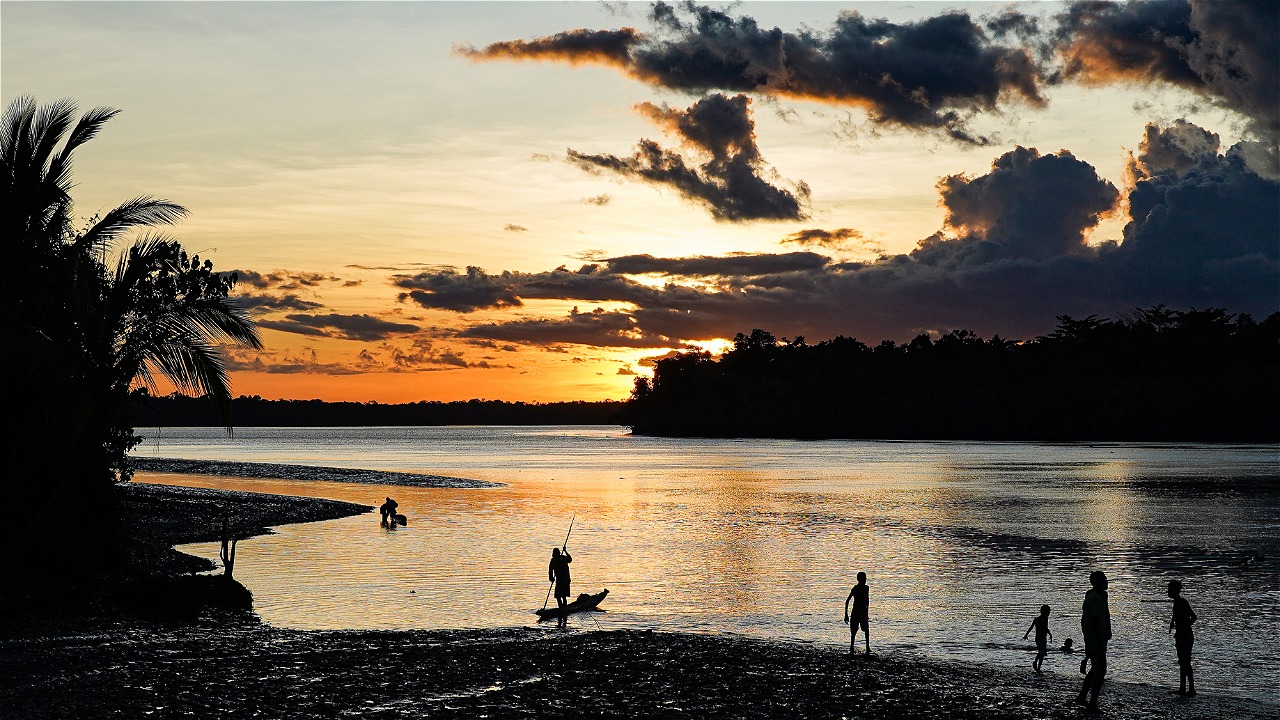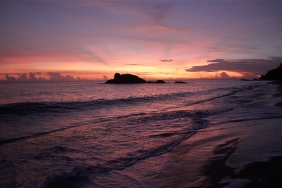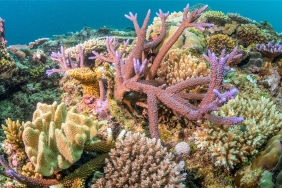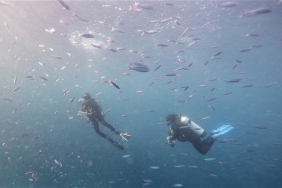WOMEN LEADERS OF RANOOHA RAYA
By: Nisa Syahidah (WWF-Indonesia)
The road team's journey to Ranooha Raya Village in Morame District, South Konawe Regency was quite challenging. That morning, we and the dive team were escorted by Simba first. Suddenly, as we approached land, we were startled by the sound of Simba's engine clashing with the coral.
"Braakkkk...." Simba hit the coral several times. Om Muhidin (WWF-Indonesia) stopped Simba, and Om Herman (WWF-Indonesia) checked the engine. Pak Otong (Halu Oleo University) went down to the sea to monitor the condition. As it turned out, the receding water did not allow Simba to sail any further. The murky color of the water made us unaware that all that was ahead was coral and sand.
While Simba twisted, we also racked our brains. Finally, we were saved by the small canoe of an old fisherman who was repairing his boat. In two back and forths, I, Yulius (WWF-Indonesia), Sasi and Mrs. Ira (Halu Oleo University), sat bent in the kole-kole (canoe) while praying that it would not capsize.
A sign prohibiting the mining of sea sand and coral reefs greeted us at the wooden jetty in Ranooha Raya Village. The village atmosphere is fairly quiet. Apart from houses on stilts, residents' houses are quite far from each other. Hills loom on the other side of the village, called Gunung Kuni-kuni by the villagers. A road trip from this village to Kendari can be taken in less than two hours.
Uniquely, unlike other villages we visited, Ranooha Raya is the only village led by a woman. Hasnawati, the village head, is a mother of six.
"Ranooha in Tolaki means buffalo puddle," she says, answering my curiosity. She says there have always been many buffaloes in the village. I myself encountered several herds of buffalo on the way to Mrs. Hasnawati's house, which is located some distance from the collection of fishermen's stilt houses.
The village is still young. It was officially declared a definitive village only in 2007. For the previous four years, Ranooha Raya had the status of a preparatory village under the name Mario Raya, which means joy.
"Since 2003, this village has continued to be a preparatory village. Pity the residents who still have to rely on the main village for assistance," said Mrs. Hasnawati. "Because it would not be able to become a new village with the name Mario Raya, in 2007, I just stamped the first stamp with the name Ranooha Raya," she continued with a laugh.
Four years later, the mother, who was active in village preparations at the time, was elected village head, beating two other male candidates in the vote.
"In the run-up to the 2011 election, I was heavily pregnant. A week before the election, this sixth child was born." she said. Her youngest child, named Ripna Cahaya Anugrah, had been pacing the living room where we were chatting. Snacking on the otek-otek (bakwan) served on the table with sambal colo-colo.
I couldn't imagine how I would manage the village when I also had to take care of a week-old baby. But it turns out that this woman can, assisted by her sister and her husband who is a physical education teacher at the elementary school next door. She doesn't talk too much, but it turns out that her modest figure is important for the three hamlets of Ranooha Raya - about 700 people there.
That day, she tells me about the glory days of seaweed cultivation in her village, which in recent years has died out due to pests. As one of the people who introduced seaweed - which in its heyday earned fishermen up to ten million per month - he expresses his hope that prosperity will return, one way or another.





